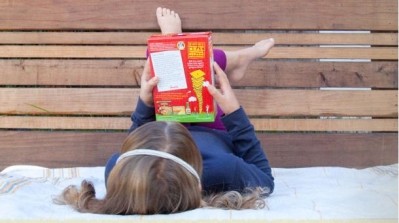Kraft to remove artificial colors & preservatives from Original Mac & Cheese in 2016

According to a statement released this morning, “Kraft will replace the synthetic colors with those derived from natural sources like paprika, annatto and turmeric.”
Triona Schmelter, Vice President of Marketing, Meals, added: "[Consumers] told us they won't compromise on the taste of their Mac & Cheese – and neither will we. That's why we've been working tirelessly to find the right recipe that our fans will love.”
Food blogger Vani Hari (a.k.a. the ‘foodbabe’) – who has garnered 365,000+ signatures to her petition on change.org urging Kraft to remove the artificial colors Yellow #5 and #6 in Mac & Cheese - immediately declared victory in a press release entitled, ‘Kraft Drops Artificial Food Dyes in All Mac & Cheese After Petition.’
She added: “This is a revolution – consumers voices are finally being heard… I hope Kraft’s decision to remove these artificial food dyes from Mac & Cheese continues throughout their entire product line including JELL-O, Kool Aid and across the industry.”
However, a Kraft spokesperson told FoodNavigator-USA that the reformulation work began long before the foodbabe got involved, adding: "This initiative began more than three years ago... We won’t compromise on taste, so until we were confident we had the right recipe, we were not going to change the product."
Asked if Kraft planned to remove artificial colors from Jell-O, the spokesperson added: "We have no updates on that front. However, the JELL-O brand is responding in a number of different ways to its consumers [she cited removing high fructose corn syrup from ready-to-eat sugar based gelatins as one example]."
Asked about how the company had approached removing artificial preservatives, she said: "It’s a process change that we made."
The Southampton Six
Kraft has always stressed that the safety of Yellow#5 and #6 - known in Europe as tartrazine (E102), and sunset yellow (E110) - had been affirmed through extensive review by the US Food and Drug Administration (FDA) and the European Food Safety Authority (EFSA).
However, controversy over the safety of artificial food colors has been raging for years, reaching a new frenzy in 2007 following the publication of a study by the University of Southampton in the UK suggesting a link between six food dyes – the ‘Southampton Six’ – and hyperactivity in children.
They were E110 (sunset yellow/FD&C Yellow #6), E104 (quinoline yellow), E122 (carmoisine), E129 (allura red or FD&C Red #40), E102 (tartrazine/FD&C Yellow#5) and E124 (ponceau 4R).
While EFSA concluded that the results could not be used as a basis for altering the acceptable daily intakes of the colors in question, the European Parliament baffled many in the industry by insisting that products featuring the colors should nevertheless include warning labels noting that they “may have an effect on activity and attention in children”.
However, an FDA advisory committee examining the link between food coloring and hyperactivity voted against recommending EU-style warning labels on products containing these dyes in the US at a hearing in Maryland in 2011.
CSPI: FDA should ban artificial food dyes
Welcoming Kraft's move today, the Center for Science in the Public Interest (CSPI) said: "Of course the FDA could solve this problem quite quickly, and in a way that levels the playing field for all companies.
"It could, as CSPI has petitioned the agency to do, prohibit the use of artificial food dyes altogether. European regulators solved most of the problem with a warning label. Given the well-documented harm that dyes cause, and given that they serve only a cosmetic purpose, why put any consumers at risk?"




















